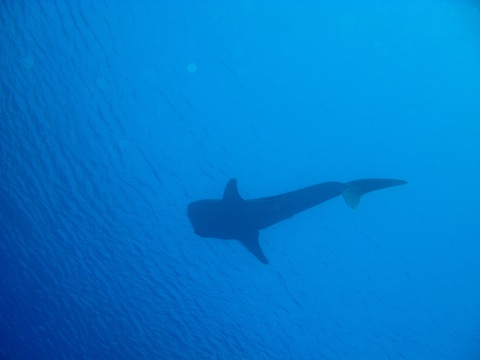FINDING NEMO WITH GILI AIR DIVERS

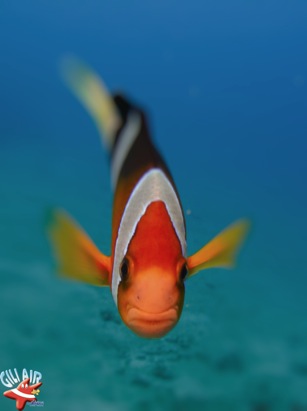
We, the staff of Gili Air Divers, always like to ensure our divers that anemonefish are not agressive at all and are always fun to watch underwater. They usually live in an anemone as a small monogamous family: a pair of adult anemonefish and several small juveniles, which are not actually their real offsprings, but juveniles that were brought to the anemone with currents and waves.
Another amazing feature of these small and lively animals is their way of changing sex during their life cycle. All anemonefish are born as male and later the largest one in an anemonie takes the leading role and transforms into a female. If a female would pass away, another male would within a week change sex to ensure a leader in an anemonie.
There are a lot of divesites around the three Gili islands (Gili Air, Gili Meno and Gili Trawangan), where divers can see an anemonefish "up close", like Air Wall, Frog Fish Point, Mirko's reef, Shark Point, Bounty Wreck, Manta Point etc.
Did you know you can hear anemonefish underwater? At Gili Air Divers we always like to take our time and listen to sounds of these small colourful creatures - try it, is really fun!
Mirko’s Reef gives divers the best of both worlds
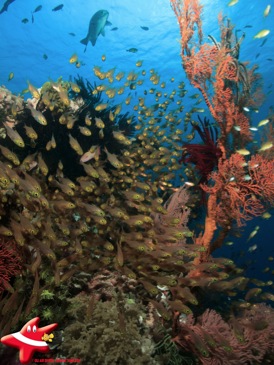
Some dive sites in the Gilis are filled to the gills with unique and abundant fish life. Some are covered in beautiful, healthy coral. And some combine the two, leaving divers feeling like they’ve been dropped into a marine documentary they saw once on television.
Mirko’s Reef is one of those sites. Located in the valley between Gili Meno and Gili Air (small, carless, beach-rimmed islands easily reached from Bali or Lombok), it ranges in depth from 14 to more than 30 meters, making it accessible for both Open Water and Advanced level divers. The coral is non-stop, coming in every type and colour. Some of the flat, circular table corals reach an incredible 2 meters in diameter, providing shelter to hundreds of colourful fish. Other corals help hide shy boxfish, barramundi or manta shrimps. Perhaps the best-hidden creature of all is the pygmy seahorse. Tiny and perfectly camouflaged in some of the deeper sea fans, they are almost impossible to spot without a trained guide.
Moving to the side of the plateau, the site turns into rolling hills that are just as fully-covered with corals and sponges in all colours: deep purple, lime green, turquoise, orange, rose. A huge array of fish, moray eels, squids, nudibranches and much more make their home there. Down a couple more hills, schools of sweetlips, batfish and jacks all congregate when the current picks up. Often, a white-tip reef shark makes his way past nearby.
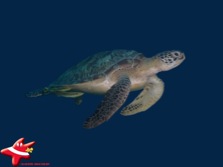
It’s no wonder Mirko’s Reef is a favourite for many customers at Gili Air Divers and Gili Meno Divers. Whichever island you choose to stay on, the dive clubs’ new boats and experienced staff can take you out to experience sites all around the three Gili islands. They always go out in small groups, visiting sites that are best for their customers’ experience level, the marine life they’re most interested in seeing, and the day’s conditions. Whether you are looking for the best coral, the most fish diversity or that perfect mix of both, the staff at Gili Air Divers and Gili Meno Divers can take you there.
Big Clean Up Days in Gili Air --- We are part of it !!!
The Local Community in Gili Air is now taking its environment in charge by organizing minthly clean up...
That was today
And Gili AIr DIvers was part of it...
We manages to go with a team of 12 divers cleaning the reefs on the east side of Gili Air ...
SAVE THE WORLD, SAVE OUR SEAS !!!!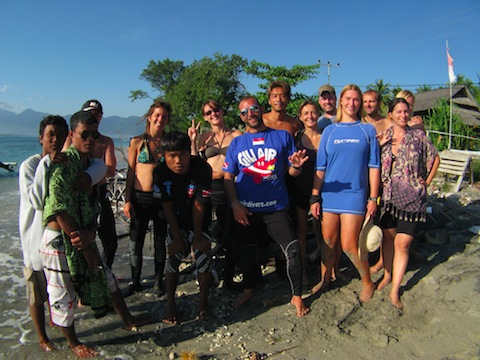
Thanks to all our volunteers !!!
We know now where the Mandarin Fish is hiding...
Want to see him ? He only come out at dawn for few moments and is very secretive, but with enough patience you will get the chance to discover this increcibly coloured creature...
Some call it the LSD fish... i have never tried but i think i understand why....
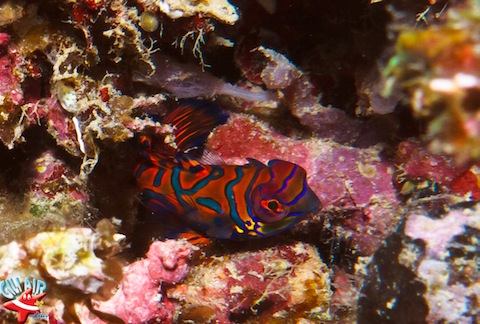
New amazing Muck Diving dive site found...
The all team went for an exploration dive at night and we found believe it or not 2 Ambon Scorpion Fish.... and many other cool creatures.
Bright yellow dwarf Lion Fish, many weird nudibranches, Blue eye stingfish, the all family of Waspfish, seahorses and many other things....
Very cool !!!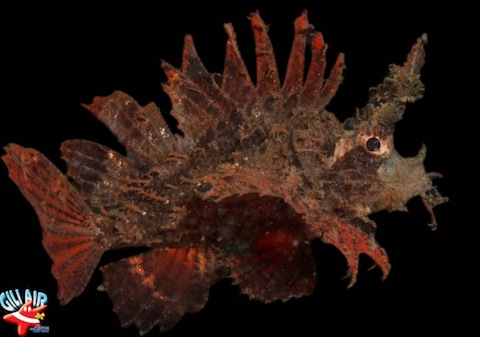
Whale Shark in Takat Piniu
After crossing over a forest of giant Elephant Ear Sponge, meeting with a Black Frogfish and finding a Fan coverd with 8 Pigmy Seahorses, we had the chance to spot in the shallow part of the Pinacle a beautiful Whale Shark, 4 to 5 meters long...
Check soon on youtube we will put the video online...
